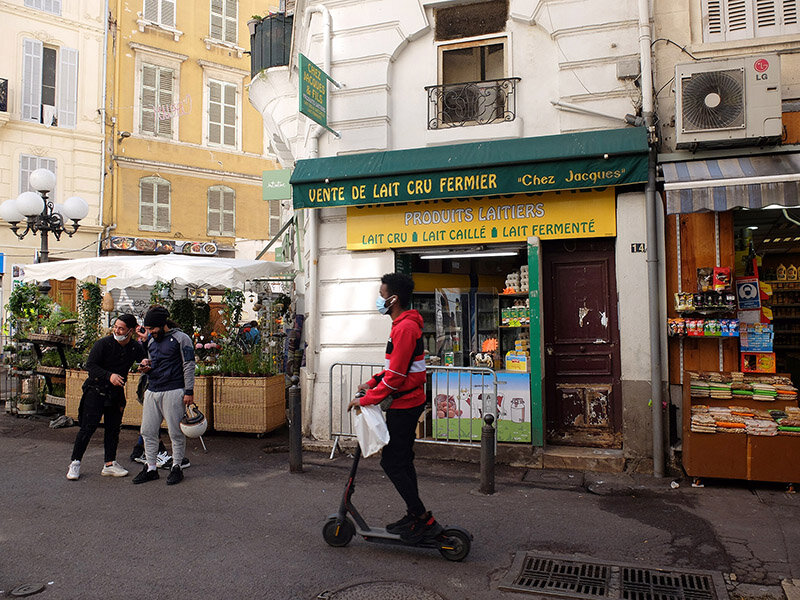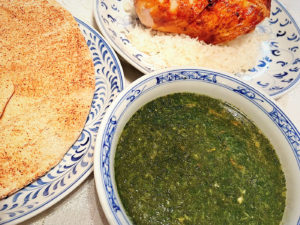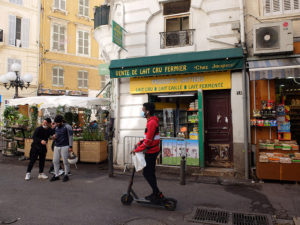Chez Jacques & Fils in Marseille (all photos courtesy Alexis Steinman)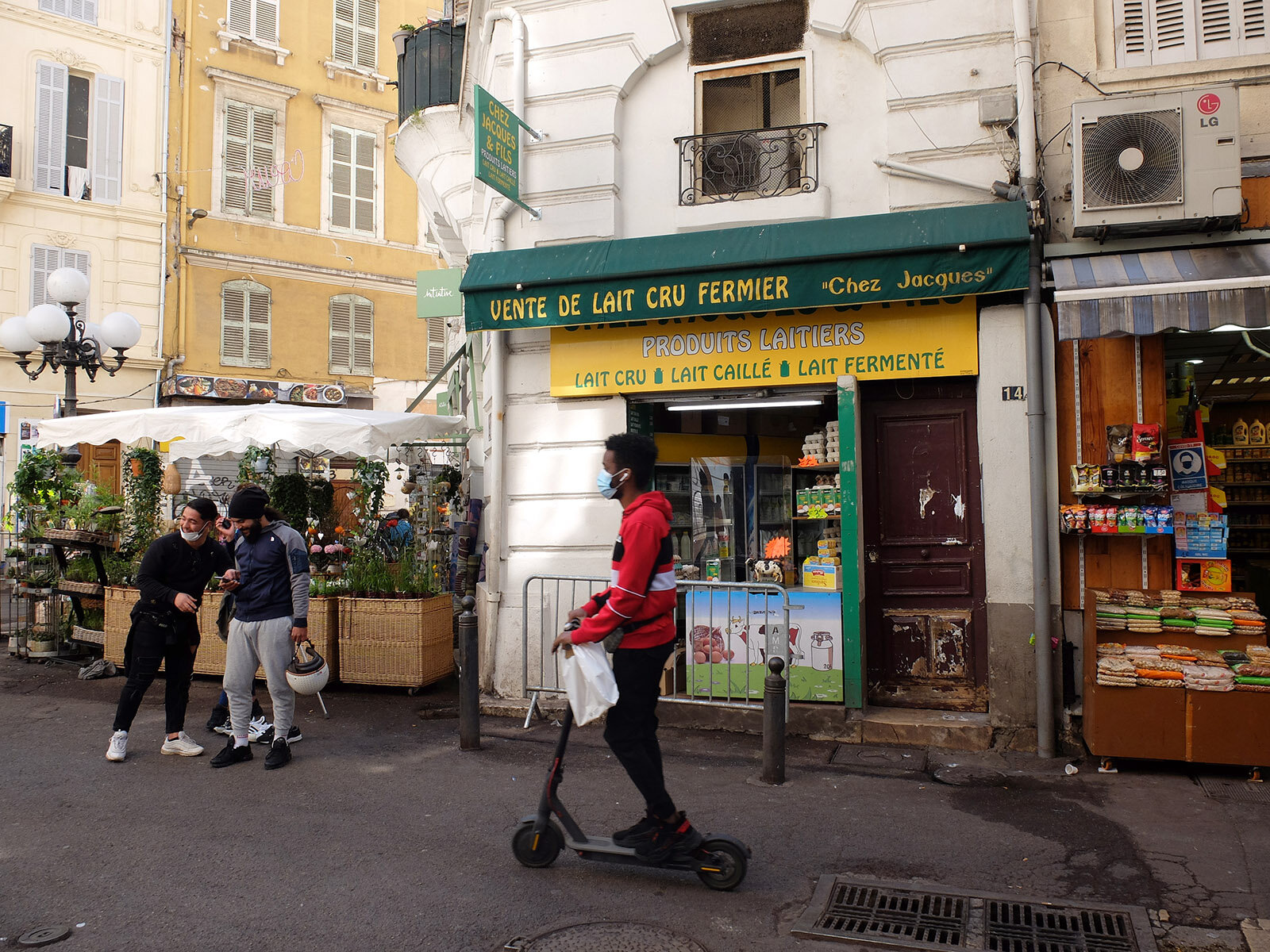 <
<
Alexis Steinman
On the Rue d’Aubagne, a narrow sloping street crammed with Lebanese pita, Senegalese pastels, and other food-centric shops, sits one of Marseille’s last-standing laiteries. You can’t enter Chez Jacques & Fils (the tiny space can only fit coolers), so you order your dairy products at the counter. Here, I buy my weekly bottle of lait cru (raw milk), fresh from their herd of cows in the Ardéche. In front of me, an older Algerian woman clad in a mauve jellaba and matching headscarf buys a bottle of lait fermenté to mark the end of Ramadan’s daily fast. When I ask the Comorian man behind me what he does with his lait caillé, he shares how he mixes the curdled milk with rice for a classic dessert, maélé na dzywa.
Though just three meters wide, this corner stand gives a glimpse into what makes this 240 square km city tick. Marseille’s simple authenticity doesn’t fuss with window dressing. Our multicultural makeup spans from the Moroccan Jews near the Grand Synagogue on the Rue Breteuil to the Beaumont quartier Armenians whose ancestors fled their country’s genocide. Open for half a century, Chez Jacques’s oft-busy counter also signifies how heritage trumps trends in this 2,600-year-old city.
Marseille can be challenging to grasp. Novelist Blaise Cendars writes how “it is not a city of sites,” like Rome, Madrid, or other classic European metropolises, but “a site in itself.” You get to know the city by getting in the thick of it: strolling its winding streets, wandering through its markets, and interacting with its people. Most importantly, you need to eat — for it is through the stomach and at the table that you’ll find Marseille’s soul.
A Thousand and One Flavors
The Noailles quarter of Marseille.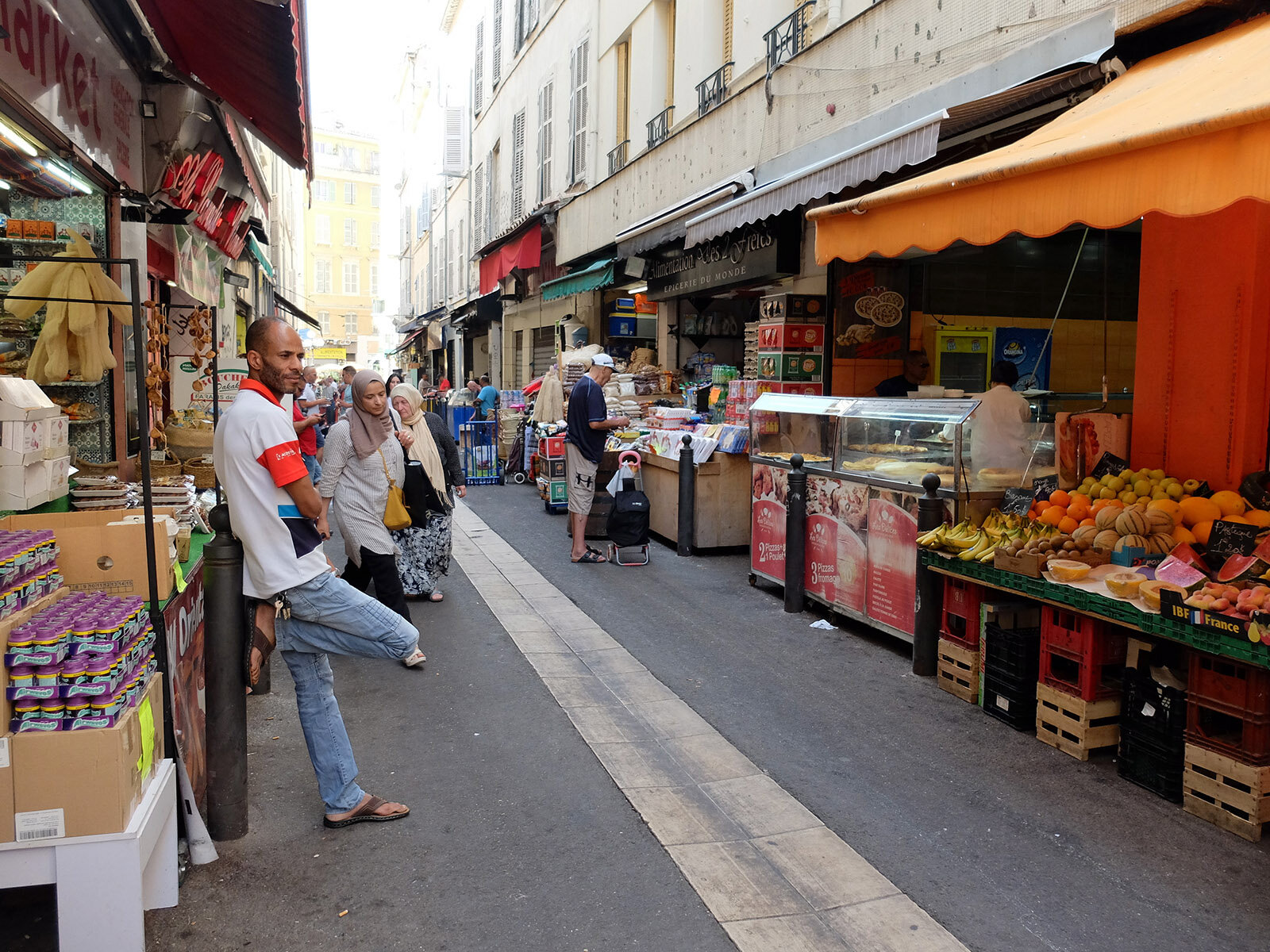 <
<
According to the Agence d’Urbanisme d’Agglomération de Marseille, no other Mediterranean port has welcomed migratory waves for as long as Marseille. Since 600 B.C., ships stocked with coffee beans from Egypt and almonds from North Africa have also transported people, each one with recipes and traditions from their homeland to toss into the diverse salmagundi of Marseille cuisine. The term “melting pot” is oft used when referring to Marseille’s cosmopolitan population. That rings true when considering the lack of homogenous ethnic neighborhoods like New York’s Chinatown or Berlin’s Little Istanbul. Yet melting implies assimilation, where cultures blend together and consequently become watered down into a more uniform whole.
A Multicultural Millefeuilles City
A more apt metaphor rather than melting pot would be millefeuilles, the French pâtisserie in which sheets (feuilles) of puff pastry are layered with pastry cream. This analogy comes from historian Jean-Louis Planche, who writes of how the Marseillais “rub shoulders with their multicultural neighbors while keeping true to their religion, culture, and tradition.” Rather than getting diluted in the cosmopolitan stew, the layers retain their form. Here, Chinese badiane, star anise, flavors our homegrown tipple, pastis. Panisses, the chickpea fritters munched at apéro, descends from the farinanta fried by Ligurian sailors in the 18th century. Corsican pork liver figatelli are is the star of winter barbecues — which are sometimes held indoors, true to our rebellious spirit, like when my friend grills up the jet-black sausages in her bourgeois apartment’s fireplace.
Au Grand-Antoine, the father and son traiteur in Noailles.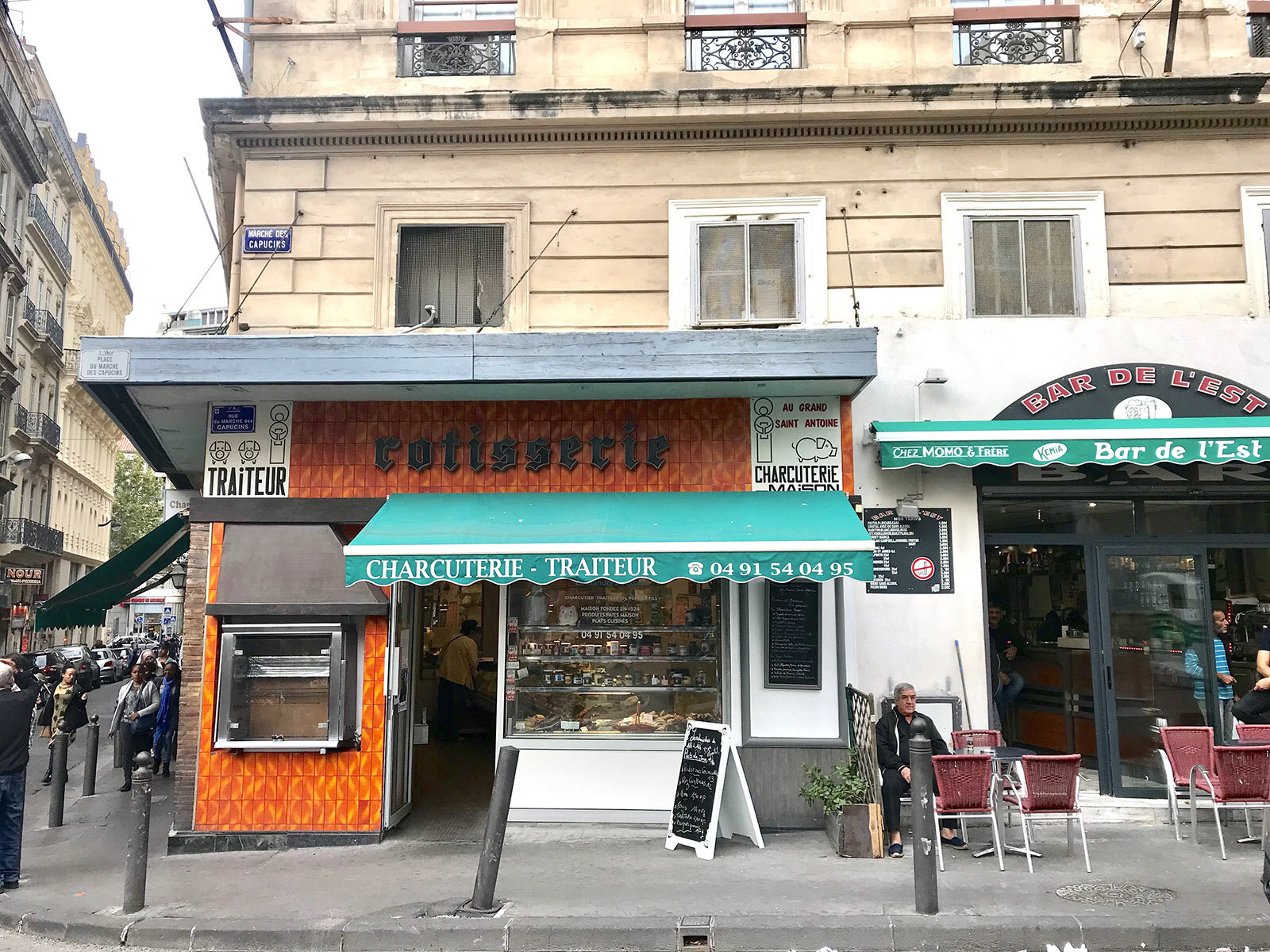 <
<
Witness this in the neighborhood of Noailles, nicknamed the “belly of Marseille” for both its central location and mouthwatering offerings of food purveyors. Across from the colorful fruit and veggie vegetable stands at the outdoor market sits Au Grand Saint-Antoine. Open since 1922, and now run by father/son duo Yves and Emmanuel Bassens, their storefront is stacked with sausages, chorizo, and cured pork loin — the porcine pleasures you’d find at traditional charcutiers across France. Yet, this one sits is located just steps away from halal butchers.
Same métier, different rules, co-existing on the same square. Proud purveyors of charcuterie made in their atelier upstairs, the Bassens are equally passionate about Noailles. Yves is the president of the neighborhood association. Emmanuel makes nems every Wednesday, using a recipe they learned from a local Vietnamese woman. Au Grand Saint-Antoine used to have a tile sign out front: a pair of pigs besides a nun — a nod to the Capuchin convent that once stood nearby. The historical signage was taken down last year during a remodel, sadly, but its removal showed respect for Noailles’ current pork-free population.
For a frontrow seat in the crowds of rubbing shoulders cited by Jean-Louis Planche, head to the nearby Rue Longue des Capucins. Perfumed with the mouthwatering enticing smoke from rotisserie chickens and the homey scent of Algerian harcha (bread) sizzling on a cast iron grill, the skinny street hums with locals shopping for their home kitchens. A Moroccan woman loads baghrir (crepes dotted with tiny holes) into her cart across from a Cambodian man buying fresh mint from the herb seller. At Saladin Épices du Monde, a dashiki-clad Senegalese buys a can of Dakatine for his chicken mafé. The same peanut butter flavors the tomato-based rougail for a customer from the Île de Réunion. One ingredient is bought side by side, for each culture’s kitchen.
Yves and Emmanuel Bassens, Au Grand Sainte Antoine.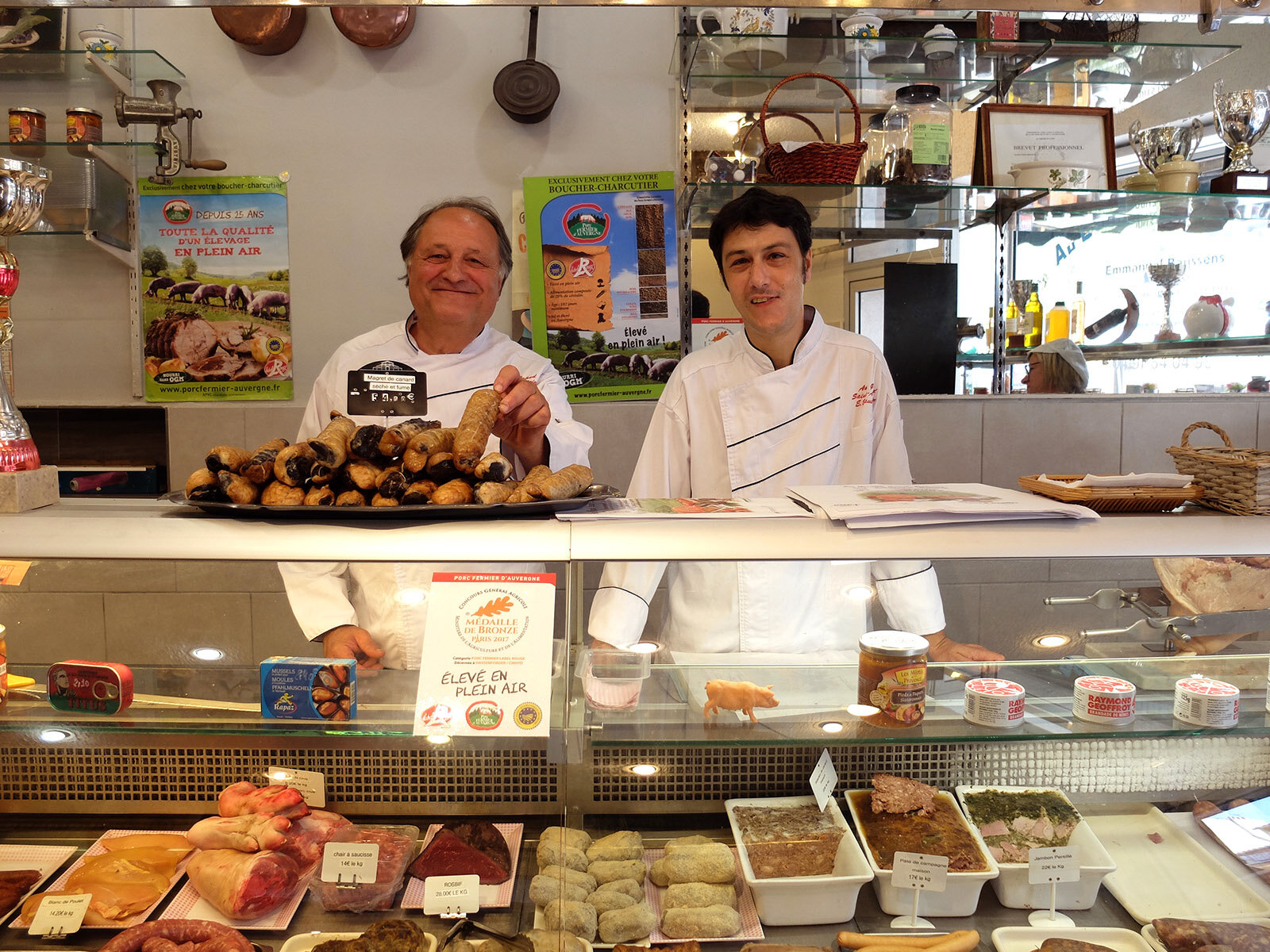 <
<
A Tunisian table for all
A block away, a constant line invariably snakes curves out from the door of Chez Yassine. Maghrebis, Marseillais of every origin, and tourists come to this Tunisian snack for its typical plates: shatteringly crispy briks, pasta topped with seafood, fiery-red links of grilled merguez. Each time I tuck into Chez Yassine, my mind wanders back to my memorable first visit.
It was the Sunday after I moved to Marseille. Inside, diners were packed like sardines at the close-knit tables. “Are you on your own?” asked the owner. “Yes,” I replied sheepishly, having just learned that solo dining was rare in France — particularly for women. He walked me to the only table of ladies and spoke to them in Arabic. One of the three women moved her purse from the empty chair, smiled, and gestured for me to sit.
The table heaved with ojja, eggs simmered in a pepper sauce, and kefteji, tender grilled vegetables topped with harissa. “What should I order?” I asked, hoping to break the ice by talking about food. “Nothing,” insisted the woman across from me. “We’ve got way too much food. You need to help.” The ladies showed me how to scoop up the vegetables with the fries and tear up baguette into the leblebi, chickpea soup, until the broth turns into a thick porridge.
Chez Yassine.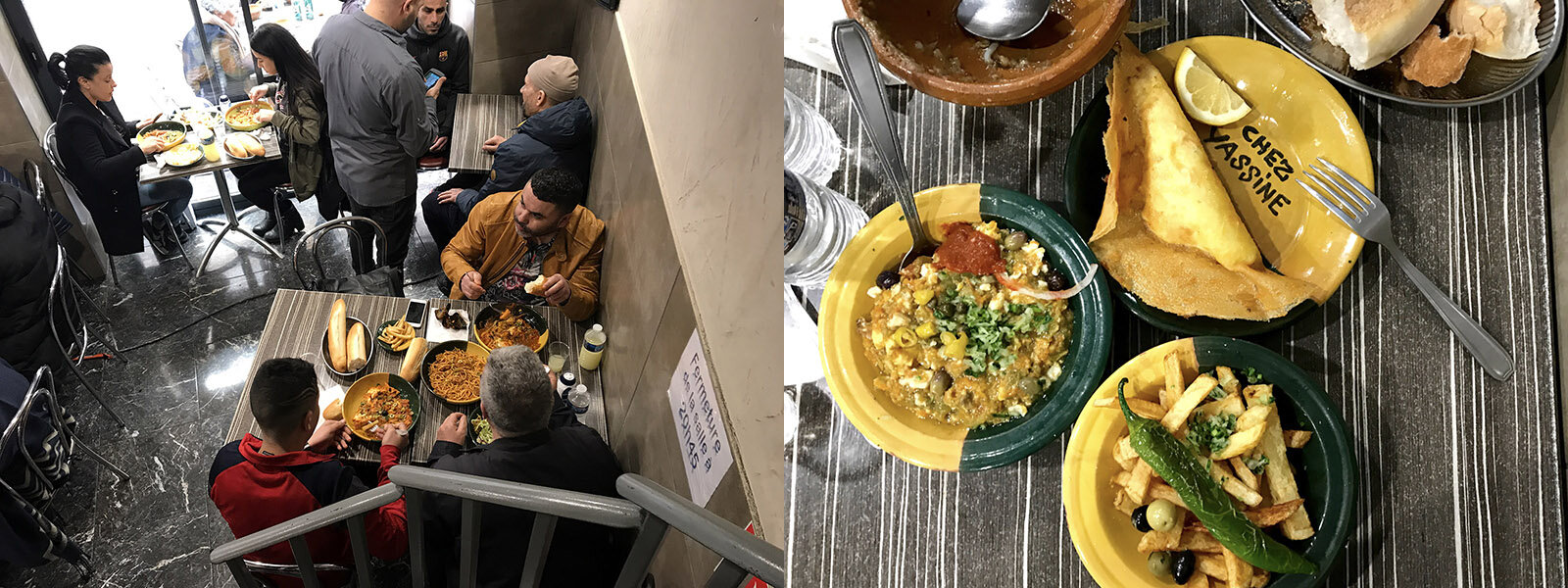 <
<
Between bites, the friends (a Moroccan, an Algerian, and a Tunisian) and I chatted about their cultures’ cuisines. Valérie praised Moroccan pâtisserie orientales for being less syrupy than other Maghrebi sweets. They all agreed stick-to-your-ribs Tunisian fare was the best antidote after their night of dancing until dawn. Our conversation flowed so easily I forgot the women had been strangers beforehand. By the simple act of sharing plates, the foreign became the familiar.
Pure and simple
A meal at Chez Yassine is à la bonne franquette, no-fuss cooking that is as embedded in Marseille’s dining DNA as the bouchon is to Lyon. Yes, some of our tables are adorned with Michelin stars and we have a new crop of trendy, locavore chefs. But it’s the simple, classic spots that are more in tune with this historic, working-class city.
Pâtisserie Journo.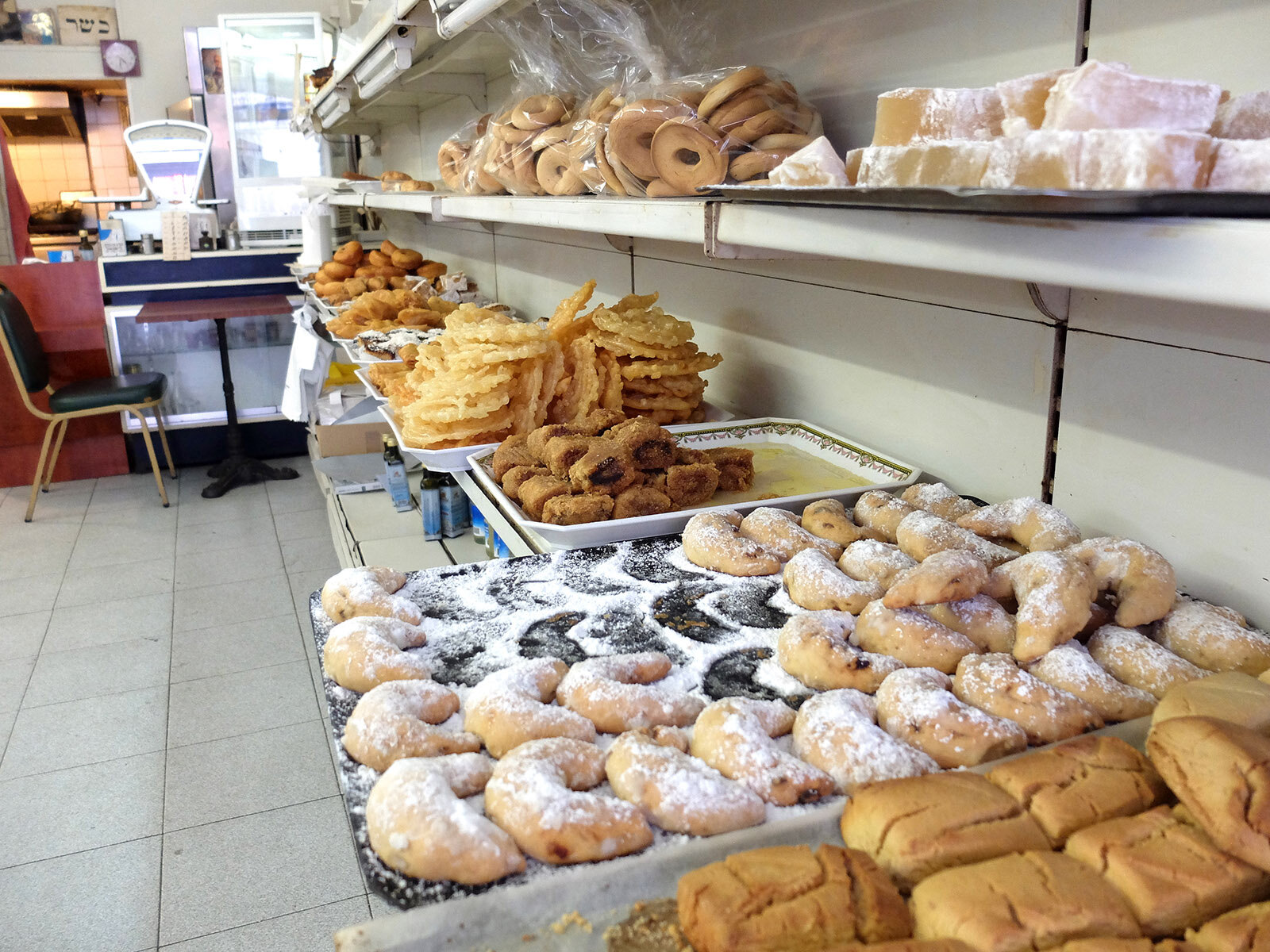 <
<
In Le Panier at Chez Etienne, a wood-fired pizzeria started by a Sicilian immigrant in 1947, the walls are lined with faded photos of smiling regulars: former mayors, mafiosi, and a waitress who has worked there for 54 years. Sipping a pastis besides weathered maps and wooden boats at Bar la Caravelle on the Vieux-Port, you can imagine the 1930s sailors who came here to drink their hardships away. The salt air at the Plage de Catalan has preserved the 70-year-old Chez Michel, where my friend’s mom celebrated her first and fortieth wedding anniversaries. These heritage places preserve the past — and feel utterly at home in the present.
Other addresses are a far cry from the Instagram-ability that has dictated design for the past years. The vrai Marseillais aren’t bothered by appearances. It’s what’s on the plate that counts. And so in the heart of the city, Pâtisserie Journo’s nondescript storefront is easy to miss. Walk inside, and a wall of shelves is lined with baking sheets topped with chewy almond macaron, sticky youyou donuts, and powdered cornes de gazelles still warm from the oven. Roger Journo opened this sliver of a shop in 1971 after leaving his homeland, Tunisia, post-independence. The 85-year-old’s faith is reflected in the Hebrew writing on the wall. But, in true Marseille fashion, his pâtisseries orientales are not limited to one’s religious persuasion, and are beloved by all.
Any way you slice it
Contrary to what the tourist office likes to tout, Marseille’s most popular dish is not bouillabaisse — the fish stew that has been marketed to mythical status. Pizza is our daily bread, with the city rivaling more pizzerias per capital than NYC. Brought by Neapolitan workers in the 1860s, pizza consumption really revved up here in 1964 with the camions de pizza — the first food trucks of France. The classic order is the moit moit: half anchovies, for briny Mediterranean flavor, and half Emmenthal cheese to remind you that you’re in France, not Italy. Chorizo or pizza armenienne, a meaty mess that resembles the Armenian lahmajun, are also favorites.
This plat populaire is devoured in every corner of the city: on the steps of the Velodrome after an OM game, on the beach for a convivial apéro amongst friends, and in a bourgeois home in the 8ème for a Sunday supper with family. Affordable, portable, and an effortless way to get dinner on the table, pizza transcends class, age, and race. At home, a Malagache can make her homeland’s romazava stew. When she picks up a wood-fired pizza from her neighborhood truck, she is proudly Marseillaise.
Food writing gets it right
When Marseille has appeared in print, its uniqueness has been viewed negatively and its discouraging side — drugs, crime, poverty — gets more coverage. Food writers and chefs regard the city in a different fashion. They see Marseille’s singularity as seductive rather than strange, its Mediterranean swagger a welcome change from France’s uptight mentality. In their eyes, the city’s multiculturalism is a multi-course feast, not an affront to French identity. In 1953, Julia Child extolled the city’s “rich broth of vigorous, emotional, uninhibited life” in letters to her Parisian friends who had scoffed at her move to Marseille. In the 2007 episode of Parts Unknown, Anthony Bourdain proclaims Marseille his favorite French city, his enthusiasm changing the mind of his Antibes-born friend, chef Eric Ripert, who grew up disdaining his coastal neighbor.
In A Considerable Town, MFK Fisher marvels at the “mysterious saltiness” that gives Marseille’s food a “zest she has not seen anywhere else.” The American essayist was inspired to write her 1950s memoir about her adopted home as a rebuttal to the tired tropes (“filthy and dangerous”) that previous writers used repetitively. Instead, Fisher finds a French word, insolite, to describe Marseille. Loosely translated as “atypical” and “indefinable”, the city’s insolite nature is what makes it so intriguing. Marseille is not, nor does not it want to be, easily understood, but we can get to know her better at the table.
<
Alexis Recommends:
Au Grand Saint-Antoine 11 Rue du Marché des Capucins +33 4 91 54 04 95
Bar la Caravelle 34 Quai du Port +33 4 91 90 36 64
Chez Yassine 8 Rue d’Aubagne +33 9 80 83 39 13
Chez Jacques & Fils 14 Rue d’Aubagne +33 6 27 15 62 92
Chez Etienne 43 Rue Lorette +33 6 16 39 78 73
Chez Michel 6 Rue des Catalans +33 4 91 52 30 63
Pâtisserie Journo 28 Rue Pavillon +33 4 91 33 65 20
Saladin Épices du Monde 10 Rue Longue des Capucins +33 4 91 33 22 76



